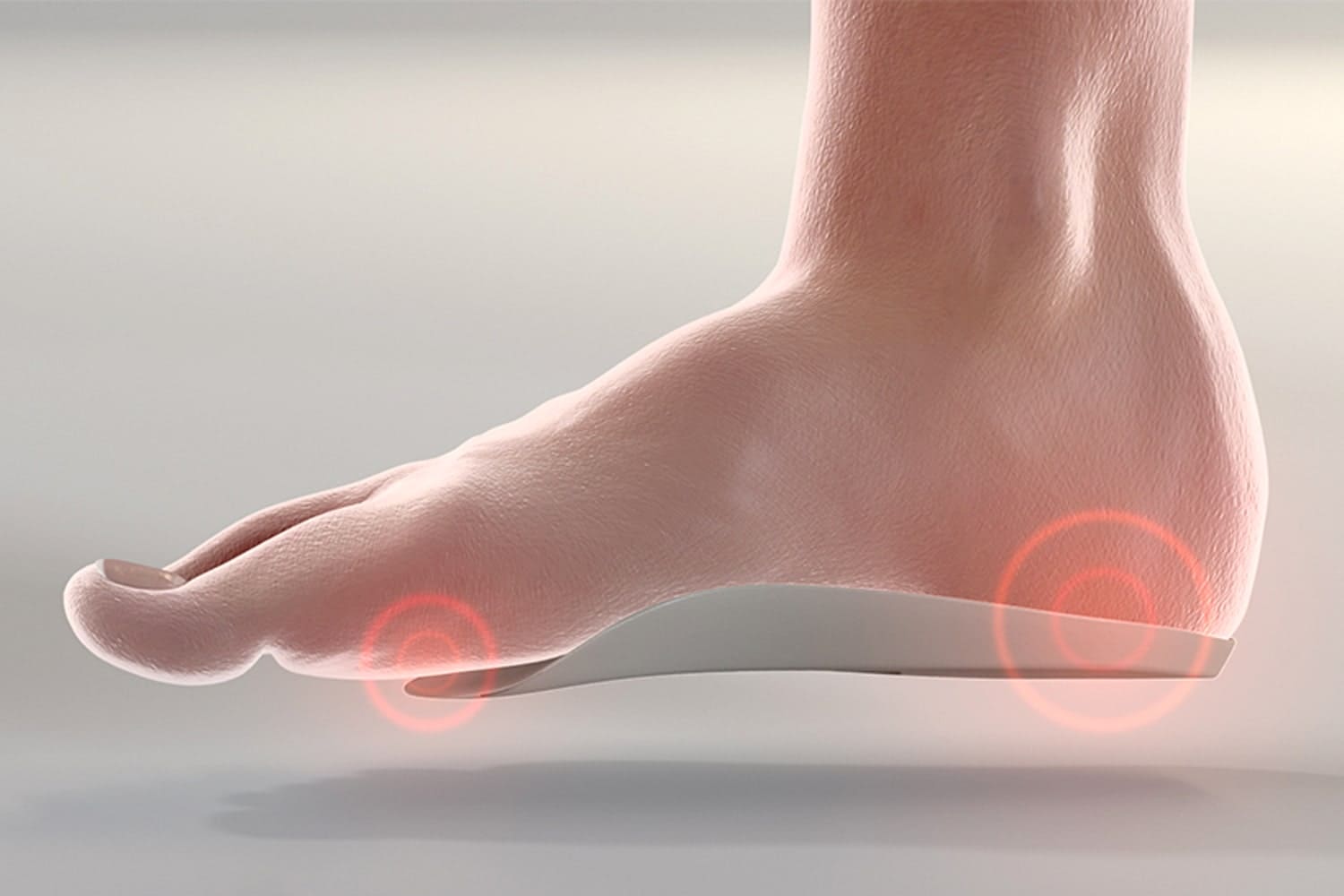Discover the truth about arch support in our comprehensive guide ‘Breaking Down Arch Support Myths: What You Really Need to Know’. Unravel common misconceptions and learn the facts about arch support’s role in foot health, comfort, and overall well-being. Whether you’re an athlete, deal with foot pain, or simply seek everyday comfort, this article provides essential insights to help you make informed decisions about your foot care. Get ready to step into a world of comfort and debunk the myths surrounding arch support with our expert advice and evidence-based information.
Introduction
The world of foot health is riddled with misconceptions, especially when it comes to arch support. It’s time we step up and debunk these myths, ensuring you’re not only comfortable but also well-informed. Let’s walk through the truth about arch support.
Table of Contents
Choosing the Right Arch Support
Understand Your Arch Type
- Identify Your Arch Height: Arches can be categorized as low, normal, or high. Each type has different support requirements.
- Consider Your Footprint: A simple wet footprint test can help determine your arch type. A full footprint usually indicates a low arch, a moderate space in the middle is a normal arch, and a very narrow or nonexistent middle section suggests a high arch.
Assess Your Footwear Needs
- Daily Activities: The type of activities you engage in plays a significant role. Athletes might need more supportive arches compared to someone who primarily does light walking.
- Existing Foot Conditions: If you have conditions like plantar fasciitis, flat feet, or overpronation, your arch support needs will differ.

Look for Quality Materials
- Comfort and Durability: Materials should provide a balance of cushioning and support. Memory foam, EVA (ethylene-vinyl acetate), and polyurethane are common.
- Breathability: This is important for maintaining foot hygiene and comfort, especially if you’re active or live in a warm climate.
Try Different Types of Arch Supports
- Insoles vs. Orthotics: Insoles are great for general support and comfort, while orthotics are often custom-made and used for specific foot issues.
- Over-the-Counter vs. Custom-Made: Over-the-counter options are a good starting point. However, for specific needs or chronic issues, custom-made orthotics prescribed by a podiatrist might be more beneficial.
Consult a Professional
- Seek Advice from a Podiatrist: Especially if you have chronic foot pain, a history of foot problems, or specific athletic needs.
- Gait Analysis: Some specialty stores offer gait analysis to help you understand how you walk or run, which can be crucial in choosing the right arch support.
Comfort and Fit
- Test for Comfort: Ensure there’s no pinching or discomfort, and that the arch support fits well within your shoes.
- Correct Fit: The arch support should match the contour of your foot and not cause your foot to slide around in the shoe.
Adjusting to New Arch Supports
- Gradual Introduction: Start by wearing them for short periods and gradually increase the duration.
- Listen to Your Body: Some discomfort is normal as your feet adjust, but persistent pain or discomfort is a sign that the arch support might not be right for you.

Understanding Foot Anatomy and Arch Types
1. Basic Anatomy of the Foot:
- Bones: The human foot contains 26 bones, divided into three sections – the forefoot (including the toes and metatarsals), the midfoot (a pyramid-like collection of bones forming the arches), and the hindfoot (including the heel and ankle).
- Muscles and Tendons: These provide movement and stability. The Achilles tendon, connecting the calf muscle to the heel, is a key player in walking and running.
- Ligaments: They offer support and limit excessive movement, aiding in the foot’s stability.
2. The Importance of Arches:
- Function: The arches of the foot play a critical role in how we walk and stand. They act as shock absorbers, bear the weight of the body, and adapt to different terrains.
- Types of Arches: There are three main arches in the foot – the medial longitudinal arch (the one most commonly referred to as the arch), the lateral longitudinal arch, and the transverse arch.
3. Different Types of Foot Arches:
- Normal Arch (Medium Arch): This is the most common type. Feet with normal arches are usually biomechanically balanced, offering good flexibility and shock absorption.
- Flat Feet (Low Arch): In flat feet, the arch is very low or nonexistent, leading to more foot surface touching the ground. This can cause strain and overpronation.
- High Arch: Characterized by a significantly raised arch. High-arched feet can be rigid, leading to poor shock absorption and an increased risk of ankle sprains.
4. Identifying Your Arch Type:
- Wet Test: One simple method is the wet footprint test. Wet your feet and stand on a dry, flat surface to see your footprint. The shape it leaves can indicate your arch type.
- Professional Assessment: For a more precise understanding, consider a professional evaluation from a podiatrist or a foot specialist.
5. Implications of Different Arch Types:
- Footwear Choices: Knowing your arch type can guide you in selecting the right shoes that provide appropriate support and comfort.
- Orthotics and Insoles: Depending on your arch type, you might benefit from specific orthotics or insoles that cater to your foot’s needs.
6. Importance of Proper Support for Each Arch Type:
- Flat Feet: May require structured support to prevent overpronation and alleviate strain.
- High Arches: Cushioning and support can help in distributing pressure and providing stability.
- Normal Arches: Generally benefit from standard footwear but can still require support based on activity level or foot health.
Debunking Common Arch Support Myths
1. Myth: More Arch Support Always Means Better Comfort
- Reality: This is not necessarily true. Excessive arch support can be just as detrimental as insufficient support. The key is finding a balance that suits your specific foot type and needs. Over-supporting the arch can lead to discomfort and other foot problems.
2. Myth: Flat Feet Always Require Arch Supports
- Reality: While arch supports can be beneficial for many with flat feet, it’s not a one-size-fits-all solution. Some individuals with flat feet experience no pain or discomfort and may not require additional support. It’s essential to assess each case individually.
3. Myth: High Arches Don’t Need Support
- Reality: Contrary to this belief, high arches often require support to distribute pressure evenly across the foot. Without proper support, high arches can lead to increased stress on other parts of the foot and even contribute to conditions like plantar fasciitis.
4. Myth: Arch Support Solely Prevents Foot Pain
- Reality: While reducing foot pain is a significant benefit, arch support also plays a crucial role in overall body alignment and balance. Proper arch support can help in reducing strain on the knees, hips, and back, contributing to overall body health.
5. Myth: Arch Supports Are Only for Athletes
- Reality: People from all walks of life can benefit from the right arch support. Whether you’re an athlete, someone who stands for long periods, or just going about daily activities, proper foot support is vital.
6. Myth: All Arch Supports Are the Same
- Reality: Arch supports come in various shapes, sizes, and materials, each designed for different foot types and needs. It’s important to choose a support that aligns with your specific requirements, whether it’s for sports, daily wear, or addressing a foot condition.
7. Myth: Custom Orthotics Are Always Better Than Over-the-Counter Options
- Reality: Custom orthotics can provide tailored support, but they are not always necessary. Many over-the-counter arch supports are highly effective and can cater to a wide range of needs. The best choice depends on individual foot conditions and preferences.
8. Myth: Once You Start Wearing Arch Supports, You Can’t Stop
- Reality: Arch supports are not meant to make your feet dependent on them. Instead, they provide support where needed. Some people may only need them for a specific period, while others might benefit from long-term use.
9. Myth: Arch Support Can Completely Cure Foot Problems
- Reality: While arch supports can alleviate symptoms and provide comfort, they are not a cure-all for every foot problem. They should be part of a comprehensive approach to foot health, including proper footwear, exercises, and, if necessary, medical intervention.

Real-Life Applications of Proper Arch Support
1. Daily Activities and Comfort:
- Reducing Fatigue: Proper arch support helps in evenly distributing pressure across your feet, reducing fatigue during long periods of standing or walking.
- Enhancing Comfort: By aligning your feet correctly, arch supports can make everyday activities like shopping, commuting, or household chores more comfortable.
2. Sports and Physical Activities:
- Improving Athletic Performance: Athletes often rely on arch support for better stability and efficiency in movements, which can enhance their overall performance.
- Injury Prevention: Proper arch support can reduce the risk of sports-related injuries by maintaining correct foot alignment and reducing strain on muscles and joints.

3. Occupational Needs:
- Benefiting Professionals Who Stand All Day: Individuals in professions like nursing, retail, or manufacturing, who spend long hours on their feet, can find significant relief with the right arch support.
- Reducing Workplace Discomfort: Proper support can help in minimizing foot, leg, and lower back pain associated with prolonged standing or walking in a work environment.
4. Health and Medical Benefits:
- Alleviating Foot-Related Conditions: Conditions like plantar fasciitis, flat feet, or overpronation can be managed more effectively with appropriate arch support.
- Contributing to Spinal Alignment: By supporting the feet properly, arch supports can play a role in aligning the spine, potentially reducing back pain and improving posture.
5. Lifestyle and Aging:
- Support During Pregnancy: Pregnant women often experience foot swelling and increased pressure on the feet; arch support can provide much-needed relief.
- Assisting in Age-Related Foot Changes: As people age, the structure of their feet can change, leading to flat feet and other issues that arch support can help address.
6. Fashion and Footwear:
- Adapting to Different Shoe Types: Arch supports can be used in various types of shoes, including dress shoes and high heels, providing comfort without compromising style.
- Enhancing Shoe Fit: Proper arch support can improve the fit of shoes, making them feel more secure and comfortable.
7. Mental and Emotional Well-Being:
- Boosting Confidence in Mobility: Knowing that your feet are well-supported can increase confidence in mobility, especially for those with foot-related anxieties.
- Enhancing Overall Quality of Life: Comfortable feet can lead to a more active and enjoyable lifestyle, positively impacting mental and emotional health.
Expert Opinions and Studies
1. Podiatrist Perspectives:
- Individualized Approach: Most podiatrists advocate for personalized arch support solutions. They emphasize that what works for one person might not be effective for another due to the uniqueness of each individual’s foot structure and needs.
- Beyond Temporary Relief: Experts in foot care often point out that while arch supports can provide immediate comfort, they should also be viewed as part of a long-term strategy to address underlying foot biomechanics.
2. Research on Arch Support and Foot Pain:
- Studies on Plantar Fasciitis: Research has shown that arch supports can significantly reduce pain and improve function in individuals suffering from plantar fasciitis, a common cause of heel pain.
- Impact on Flat Feet: Scientific studies suggest that people with flat feet can experience reduced discomfort and improved foot mechanics with the use of appropriate arch supports.
3. The Role of Arch Support in Athletic Performance:
- Enhanced Athletic Efficiency: Research in sports medicine indicates that proper arch support can lead to improved athletic performance by optimizing foot alignment and reducing fatigue.
- Injury Prevention: Several studies have found that the right kind of arch support can help in preventing common sports-related injuries by maintaining proper foot posture during high-impact activities.
4. Arch Support in the Aging Population:
- Support for Age-Related Changes: Geriatric studies highlight the importance of arch support in older adults, noting that it can assist in managing changes in foot structure and function that occur with aging.
- Reducing Fall Risk: Research has also shown that proper foot support can play a role in reducing the risk of falls in the elderly by improving balance and stability.
5. Custom Orthotics vs. Over-the-Counter Supports:
- Effectiveness of Custom Solutions: Many studies support the use of custom orthotics for specific foot conditions, citing their tailored fit and targeted support.
- The Viability of Over-the-Counter Options: However, research also acknowledges that over-the-counter arch supports can be highly effective for general foot support needs and are more accessible.
6. Long-Term Effects of Arch Support:
- Sustained Benefits: Longitudinal studies indicate that continued use of appropriate arch supports can have lasting positive effects on foot health and overall posture.
- Improvements in Quality of Life: Additionally, research has linked proper arch support to improvements in overall quality of life, especially for individuals with chronic foot conditions.

Source to Get Perfect Insoles for Your Specific Needs
Conclusion
Understanding arch support is not just about debunking myths; it’s about stepping into a world of comfort and health. Remember, the best step forward is the one taken in the right shoes. Don’t forget to assess your own feet and choose what’s best for you.









